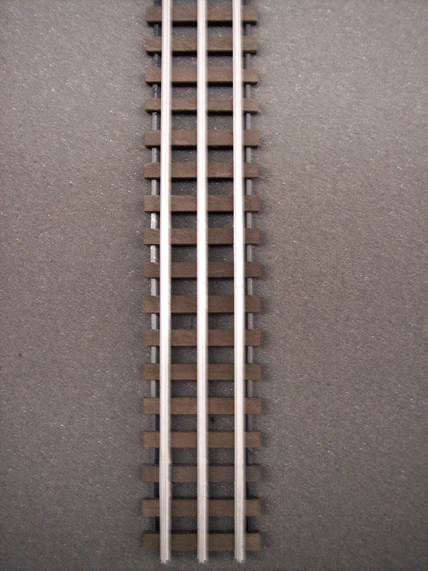Goodday All,
Been lurking here for some time & have learned a ton of stuff from many, bought stuff from some & look forward to reading the forum almost daily. Now I have a conundrum of sorts. Hoping the wise men & women of this forum can provide me with some guidance.
I have invested in & quite familiar with Fastrack (still need much more) & do NOT have an operating layout. Retirement is near & I am now at the starting point. I have found a couple layouts (courtesy of Ken-Oscale's postings) that I am leaning towards. One design had numerous small Fastrack sections to 'make things fit' in several parts of the layout, well that got me to thinking about the additional dollars.
One particular section was 29-1/4" & it required 9 pieces of Fastrack to complete & the cost was about 40 USD just for that section (all straights!). I figured why not just cut 3/4 of an inch off a 30"section of Fastrack (way less joints in the track too)? Looking at Fastrack I realize that was more of a PITA than 'just' cutting 3/4" off that piece.
Then I looked at Gargraves track & with the Phantom flex (item 101) I could purchase 50-37" pieces for about 500 USD. The layout has 120 feet of track total (including switches). I have NO problem with building things, using tools & very good at McGyver'ing stuff to work.
I realize that using Gargraves track can be more time consuming & will require ballast (additional $) at some point, but that can be done at anytime. I do not consider this extra time 'work', it is playtime when it comes to model railroading so time spent is enjoyable time not labour (yeah I'm Canadian).
Not being familiar with Gargraves other then what I see & read online, my questions are;
- Is it really that simple? I mean can I use Gargraves Phantom flex for straights? Bend as needed for curves? Cut as needed for 'fillers'?
- What am I NOT considering? Electrical hookups? Special track pins? Nuances I am not aware of?
- Looking at Ross switches with DZ1000 or DZ2500 switch machines I believe that the cost is about the same as Fastrack remote/command switches, is this the case? Apparently it is easier to replace a DZ switch machine on a Ross switch than replacing a Fastrack switch (Ross switch does not have to be removed?).
- Regarding Fastrack, is there a tool to cut/punch the holes in the track bed & keep the pins anchored as they are before the cut?
I do have Lionel Legacy Command system which I will want to use so please take that into consideration.
Finally if you have read all of this I thank you for your time & hope for some insight from those of you with the knowledge I need.
Cheers, Ric

















